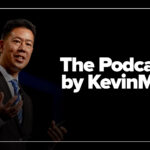Ten years old and terrified, my patient sat curled in the chair, tears flowing, knees pulled to her chest, refusing to go to school for the third week in a row. Her parents looked exhausted. “We have tried everything. We don’t want to medicate her… but we can’t keep going like this.”
As a child and adolescent psychiatrist, I’ve had this conversation hundreds of times. Sometimes families walk in asking for medication. Others arrive adamant that psychiatric medications are out of the question. I understand both impulses.
I’m a cautious prescriber myself, particularly when working with children and adolescents. I’m fully aware that I’m working with a developing brain. And yet, after decades of experience, I’ve come to a hard-won truth that sometimes, being too cautious is the risk.
Understanding when anxiety becomes a problem
Anxiety happens on a spectrum, and because most of us experience it to a degree, people often underestimate just how overwhelming clinical anxiety can be. We assume it’s something you can push through because many of us have done just that. But clinical anxiety doesn’t just come and go—it takes over.
In its typical form, anxiety is adaptive. In medical school, it motivated me to stay in and study when it was tempting to go out with friends. The anxiety had a purpose: It kept me focused. Once the test was over, it faded.
But clinical anxiety is different. It’s not motivating—it’s paralyzing. It doesn’t come and go—it lingers, loud and relentless. The hypervigilant brain gets stuck in threat mode, constantly scanning for danger, amplifying uncertainty, minimizing safety and agency. This kind of anxiety doesn’t push a child to grow. It shrinks their world.
Some children are biologically more vulnerable through their fear circuitry: faster to activate, slower to calm. That’s not because they’re weak or willful—it’s how their system is wired. And it’s why reassurance and willpower alone often fall short. Biological supports like healthy sleep, nutrition, exercise, and in some cases, medication, can help shift that internal state and create room for change.
As Drs. Ross Greene and Stuart Ablon put it, “Kids do well if they can.” When they have the right tools and support, they show up. They try. They grow.
When should we consider medication?
The responsibility we carry as physicians is to be safe, thoughtful, and evidence-based while making sure our patients get the treatment they need to make the progress they deserve.
Rather than asking, “Is this child anxious?” I ask, “Is anxiety running the show?” And if it is, then “What will it take to help this child push back?”
When anxiety gets severe and overtakes a child’s world—interfering with school, friendships, family life—medication deserves consideration. Medication is not a silver bullet. It doesn’t teach new skills. But it can make space for the child to learn and practice those skills through other means, like cognitive behavioral therapy (CBT). Put another way, medication can’t replace therapy, but it can make it more likely to succeed.
For that reason, I do not prescribe medication in isolation. I’m either providing therapy myself or ensuring the family is actively connected with a provider who can address the psychological and social dimensions of anxiety, setting them up for lasting change.
Data shows this combination treatment works. The landmark RCT showed that cognitive behavioral therapy (CBT) combined with medication (SSRI) led to a response rate above 80 percent, over 20 percent greater than therapy or medication alone.
Avoiding common traps
Here is a common scenario: A child starts on a low dose of an SSRI. Side effects are minimal, but so are improvements. After a few weeks, the family concludes, “I guess meds don’t work.”
A trial was started, not completed. If we’re going to try medication, let us really try it. A fair trial requires sufficient duration (approximately 12–28 weeks) of a therapeutic dose with confirmed adherence (and don’t underestimate how often this is the missing piece). Just as importantly, we need to set realistic expectations. Medication is not meant to eliminate all anxiety; remember that some anxiety is natural, and some is even helpful.
We are aiming to turn down the volume of the anxiety. When anxiety is screaming, it’s hard (and exhausting) to listen to anything else. But when the volume comes down even a couple of notches, there’s space to separate from the anxiety and respond to it differently. When that shift happens, it changes the momentum. Therapy becomes more productive, school feels more doable, and hope returns.
Medication is not a life sentence.
Understandably, families ask, “Will my child need to be on this forever?”
In most cases, the answer is no. The pediatric brain is malleable, shaped by experience. And once a child begins moving through life with greater courage, connection, and consistency, the brain learns new patterns. It learns that fear does not have to call the shots.
Once we see sustained progress—6–12 months of feeling empowered, attending school, forming friendships, engaging in meaningful activities, bouncing back from challenges—we consider a slow, deliberate taper. Not because the child is “cured,” but because the internal system has recalibrated. They are no longer navigating from fear; they’re building from strength.
The cost of doing nothing
When my son was young, his pulmonologist recommended starting daily steroids for his asthma. I hesitated. She looked me in the eye and said, “Do you want him to be able to breathe?” That moment stuck with me.
We talk a lot about the risks of medication. But we also need to ask, “What are the risks of untreated clinical anxiety?” They are real, ranging from academic derailment and strained relationships to major family and school stress, to depression, substance use, and suicidality.
We are not choosing between “medicating” and “doing nothing.” We are choosing between intervening thoughtfully and hoping that a developmental disorder resolves itself before it leaves permanent scars. In making that choice, let us be bold enough to treat, humble enough to listen, and wise enough to consider every tool we have.
Every child deserves the chance to breathe, and sometimes, medication is the bridge that gets them there.
Mona Potter is a physician executive.


















![How should kratom be regulated? [PODCAST]](https://kevinmd.com/wp-content/uploads/Design-2-190x100.jpg)


![Understanding the unseen role of back-to-school diagnostics [PODCAST]](https://kevinmd.com/wp-content/uploads/Design-3-1-190x100.jpg)
